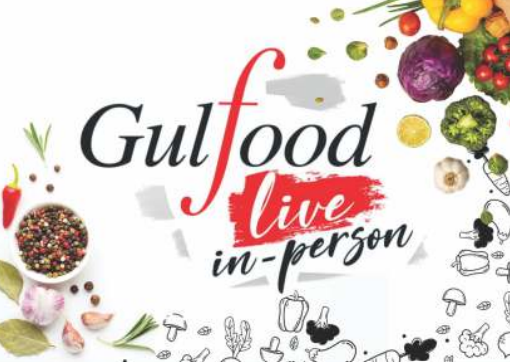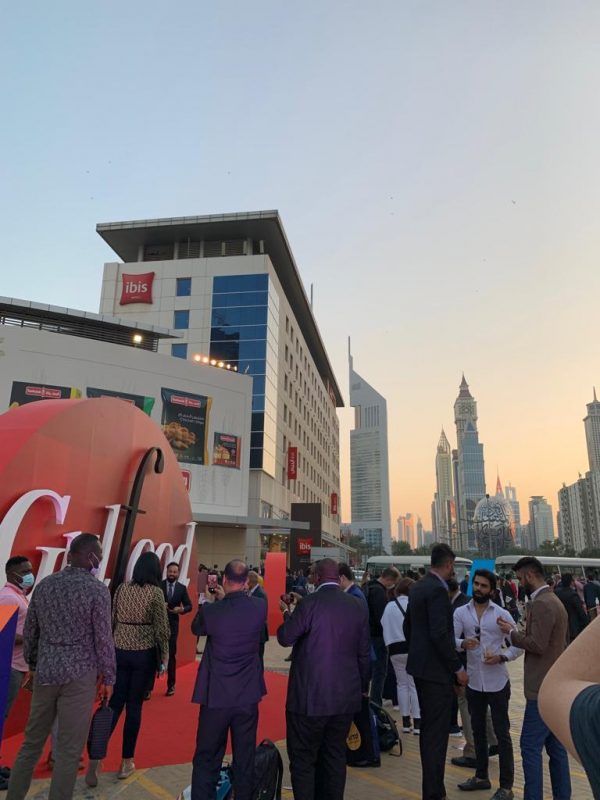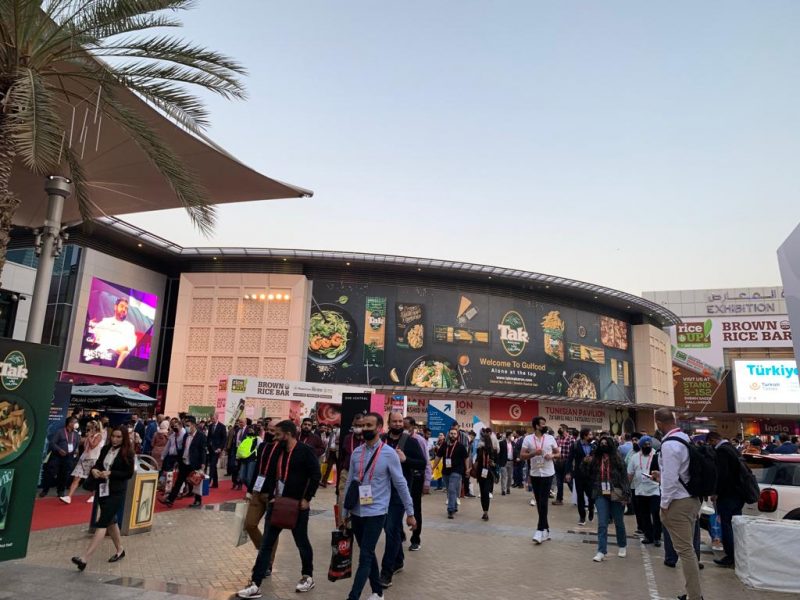The delicate but rewarding global food business shines at Gulfood 2022
Food & retail industry projected to soar to $17 trillion in value by 2027 but food wastage is also a major concern with 1.3 tons wasted annually worldwide costing US$1 trillion
More foods are being transported from one point to another across continents to satisfy the world’s growing demand for different cuisines and tastes, especially in affluent cities.
From agriculture, to manufacturing, to processing, tech companies, groceries, restaurants, supermarkets, etc., so many industries and subsectors have their business anchored on food, including the air cargo industry, which transports on a daily basis countless tons of perishables like fresh vegetables and fruits, meat and meat products, seafood and related products, shellfish, fresh fish, spices and dried herbs, flowers, processed foods, cheese and dairy products, among other things.
The global food & grocery retail market had grown enormously that in 2020, despite the pandemic, its value reached USD12 trillion with an annual forecast growth rate of 5% over 2021-2027, thereby accumulating to USD17.29 trillion by 2027, according to MarketStudyReport.
The intelligence research firm attributed the global food industry’s growth to the rise of the middle class, increase in retail sales, rising demand for different food products, increasing e-commerce sales, and growing food processing verticals.
Ironically, while the global food industry is growing, the number of people facing hunger has also grown, largely fueled by the negative impacts of the pandemic.
In her speech at the opening of Gulfood 2022 in Dubai, UAE Minister of Climate Change and Environment Mariam Al Mheiri said almost 811 million people are facing hunger, with one in three people on earth denied access to adequate food due to conflicts, climate change and the ongoing pandemic.
She urged the world to explore innovative ways to stop global hunger and to address food insecurity and global food waste.
Game-changer Gulfood 2022
Gulfood, the world’s largest annual F&B sourcing in-person event was held as scheduled for five days (13-17 February) at the Dubai World Trade Center, bringing together more than 4,000 companies and industry thought leaders from 120 countries.
It was a joyous moment for exhibitors who brought in the best of their products to showcase for business opportunities and for everyone to see and enjoy.
But this year’s Gulfood, the 27th edition, made a difference with the launch of Gulfood Zero Waste, a global campaign in partnership with restaurants and hotels driving the zero-waste initiative globally.
The latest data from the Food and Agriculture Organization of the United Nations indicates that one-third of the world’s food is wasted, equating to 1.3 tons annually at a cost of US$1 trillion. Beyond the detrimental environmental impact, wastage also translates to the loss of nutrients and resources (water, land, labor, energy, and cost) invested in food production.
 The Gulfood 2022 onsite Zero Waste Mega Impact resolved to collect 1,000kg of food wastage to produce 400kg of compost, equating to a CO2e emissions saving of 1,000kg.
The Gulfood 2022 onsite Zero Waste Mega Impact resolved to collect 1,000kg of food wastage to produce 400kg of compost, equating to a CO2e emissions saving of 1,000kg.
Across the five days of Gulfood 2022, food wastes were collected from exhibitors as well as the live-cooking stations and sent for compost production. The initiative also provides a platform for impact-driven, homegrown companies, including a partnership with The Waste Lab, which is implementing solutions to repurpose food, such as compost, with societal and economic benefits.
Gulfood also took the lead to address this issue by launching a first-of-its-kind citywide activation that will see chefs from 30 UAE restaurants, cafes and dark kitchens making the best of ‘ugly’ produce and eliminating waste.
Trixie LohMirmand, executive vice president, exhibitions & events, DWTC, said: “E-commerce in F&B is experiencing a meteoric rise thanks to a number of key factors. In this region specifically, it is flourishing thanks to increased high-income potential, high internet penetration, developed logistics network, modern digital payment systems, a growing tech-savvy youth population, and strong government support. As the F&B industry’s undisputed transformative powerbroker, Gulfood will connect and create the future course of the digital marketplace, with crucial insights from producers and aggregators.
“It will be a coming together of an industry in need of addressing ecosystem challenges and opportunities, which if surmounted can be a huge engine of growth and transformation. What consumers are looking for from the food and beverage industry is very different from just a few years ago, and these new expectations are here to stay beyond 2022. Gulfood will focus the industry-wide debate on the trends and new value-chain networks that will shape the future,” LohMirmand added.
Major global challenges, trends and change drivers were also examined, including e-commerce, technology, sustainability and disruptive cellular agriculture bio-innovation (the production of animal-sourced foods from cell culture methods) and emerging slow and plant-based food trends.
GCC food consumption to reach 52.4 million metric tons
Food consumption in the Gulf region is anticipated to grow at 2.3 percent to reach 52.4 million metric tons by 2025.
The Gulf Cooperation Council, whose members include the United Arab Emirates, the Kingdom of Bahrain, Kingdom of Saudi Arabia, the Sultanate of Oman, Qatar and Kuwait, has remained relatively conservative, growing at a slower pace amid economic and geo-political concerns in recent years.
 While demand has been supported by growing population and evolving consumer preferences, the fall in per capita income since the slowdown in oil prices in mid-2014 has led to the growth of food consumption to remain flat between 2014 – 2019, according to the UAE-based investment banking advisory firm, Alpen Capital’s latest report on GCC Food Industry report.
While demand has been supported by growing population and evolving consumer preferences, the fall in per capita income since the slowdown in oil prices in mid-2014 has led to the growth of food consumption to remain flat between 2014 – 2019, according to the UAE-based investment banking advisory firm, Alpen Capital’s latest report on GCC Food Industry report.
The continuous collaboration between the public and private sector and the ongoing efforts of the governments to increase food security has helped the GCC nations build a strong food ecosystem, withstanding the Covid-19 pandemic.
In 2020, the GCC consumed 46.8 million metric tons of food, with Saudi Arabia and the UAE consuming a combined 77.9 percent due to greater population. Outside the two most populous nations in the region, Oman, Kuwait and Bahrain are forecast to grow at 4.2 per cent and 4.1 per cent taking higher growth rates in the region.
Cereals will remain the staple food of the region, the report predicts, albeit with much slower growth as most food categories experience minimal change in share through to 2025. However, the ‘others’ food category comprising of eggs, fish, pulses, oils and fats, potato and honey is expected to witness the highest growth rate of 3.7 percent driven by pandemic-led changes in eating habits.
“Food consumption in the GCC has been relatively stable in the past years with a few lows and highs depending on the economic situation. In terms of the type of food consumed, staples such as rice, wheat and other grains have always seen a steady to high demand, but in recent years, boosted by the impact of the pandemic, we have also witnessed increased sales in the health food category. Foods such as quinoa, chia seeds, sprouted brown rice are quickly picking up demand with the increasing percentage of health-conscious consumers. Moreover, initiatives taken by the government in line with food security, local production, and support towards the health and wellbeing of the population has changed the overall outlook and dynamics of the food sector in the region,” said Priyanka Mittal, director, India Gate KRBL Ltd.
The onset of the COVID-19 pandemic coupled with high-incidence of lifestyle diseases is encouraging healthy food habits in the GCC region, which has led to a boost in demand for organic food, with consumers seeking more home-cooked dishes and plant-based products with high nutritional value.
Ready-to-cook packaged variants have grown in popularity with the advent of global food retailers to the region, alongside demand for private labels. With population estimated to reach 66.5 million by 2025, consumers have become increasingly price sensitive, prompting large retailers to turn to private labels to safeguard revenue.
“Over the past few years there has been a greater focus on enhancing agricultural capability by implementing technologies like vertical farming, aquaponics, hydroponics, etc. to improve self-sufficiency. Many deals concluded as part of the region’s strategic plan to improve food security and reduce dependence on imports. Companies pursued the path of inorganic growth to focus on the growing food demand in the region and thus expanding their offerings. Going forward, food aggregators are expected to transform the industry dynamics, and are likely to see traction as consolidation is imminent in the backdrop of Covid-19 to ensure survival,” said Sanjay Bhatia, managing director, Alpen Capital.


